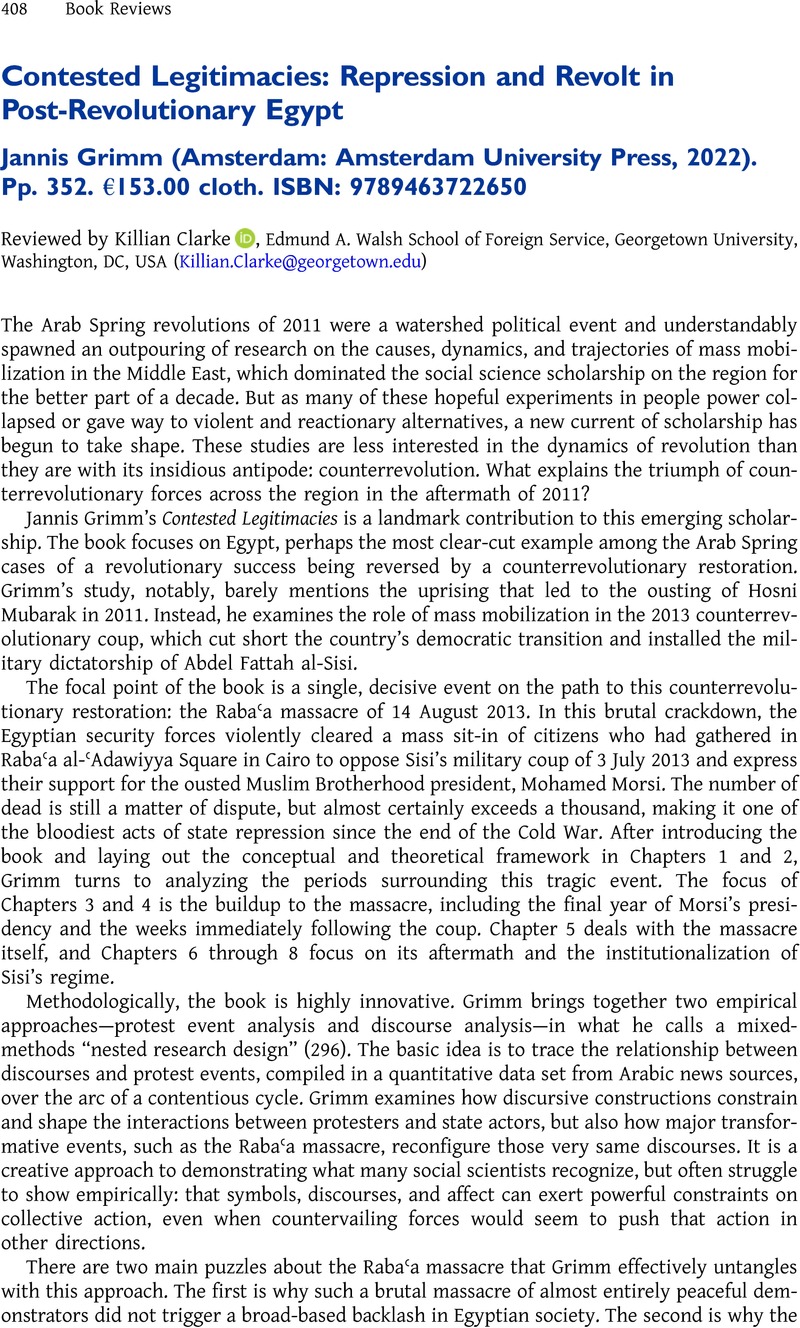No CrossRef data available.
Article contents
Contested Legitimacies: Repression and Revolt in Post-Revolutionary Egypt Jannis Grimm (Amsterdam: Amsterdam University Press, 2022). Pp. 352. €153.00 cloth. ISBN: 9789463722650
Review products
Contested Legitimacies: Repression and Revolt in Post-Revolutionary Egypt Jannis Grimm (Amsterdam: Amsterdam University Press, 2022). Pp. 352. €153.00 cloth. ISBN: 9789463722650
Published online by Cambridge University Press: 26 May 2023
Abstract
An abstract is not available for this content so a preview has been provided. Please use the Get access link above for information on how to access this content.

- Type
- Book Review
- Information
- Copyright
- Copyright © The Author(s), 2023. Published by Cambridge University Press



